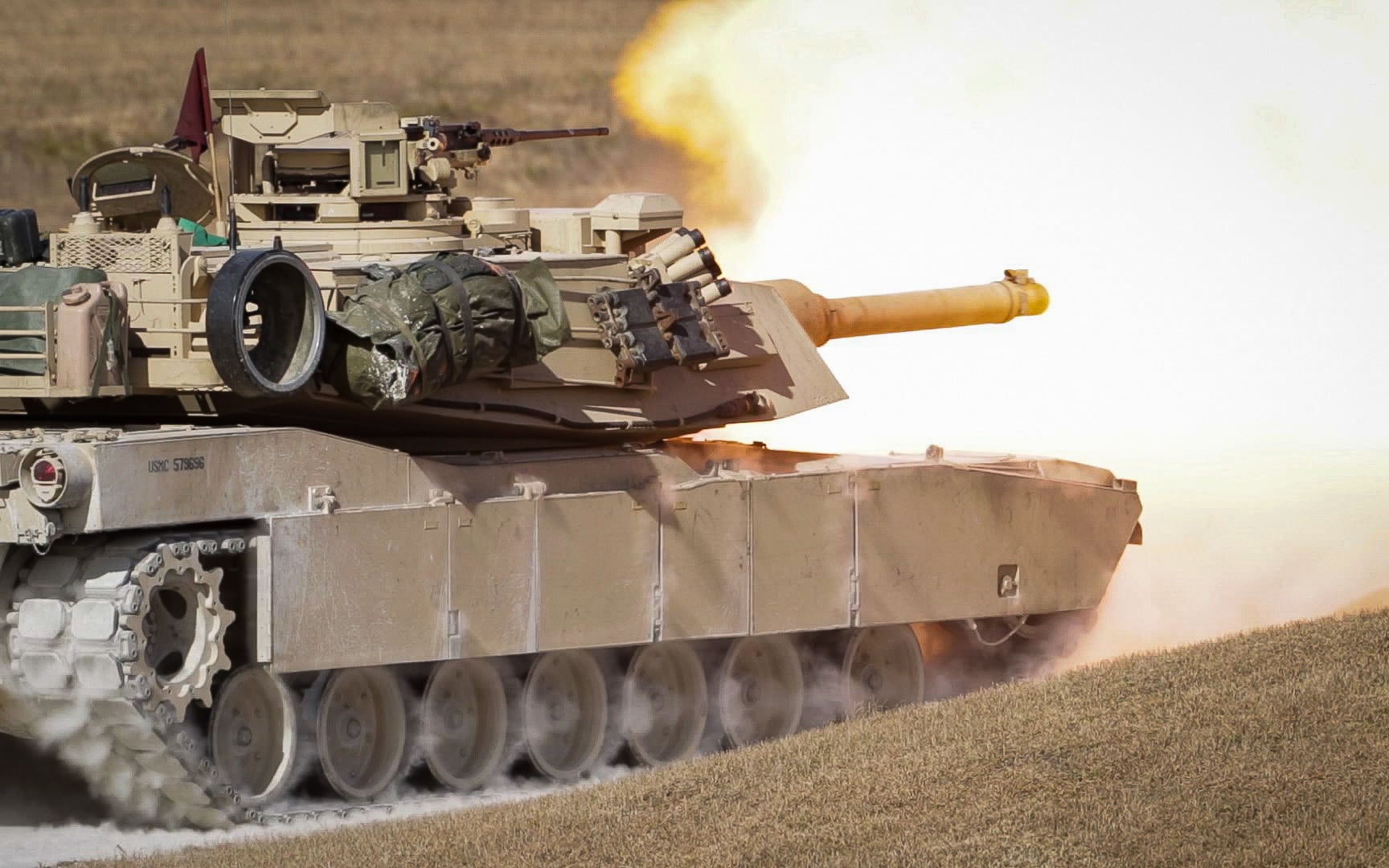While the Corps buys modification kits for its Abrams tanks, the Army has had a new version for two years and eyes another upgrade by 2025.
The Marine Corps will continue to upgrade its Abrams tanks and is pushing ahead on a bridging system to replace the legacy M60 tank, a Vietnam-era tank used to unfold bridges that can support the Abrams as it crosses gaps in the battlefield.
Recently released budget request documents show that the Corps is asking for about the same amount of money to continue the Abrams upgrades in 2020 but will double then nearly triple that amount to keep upgrading the Abrams through 2024.
The M1A1 Abrams upgrade program includes modifications kits and money for support vehicles and devices. Those include the Assault Bridging Modernization Program that replaces the M60 and launching system of the Armored Vehicle Launching Bridge, used extensively in the 2003 Iraq invasion.
The kit also improves the Improved Recovery Vehicle, or the M88A2 Hercules, that can haul tanks off the battlefield for maintenance or recover them from ditches, canals or other hazards it might encounter.
In 2018 and 2019 the Corps sought nearly $23 million for the packages, which will increase steadily to $37.6 million in 2021 and upward until at least 2024 when $57.7 million is projected for the kits.
Some of the specific enhancements to the Abrams itself include a gunner’s primary sight lower panel. While the title sounds somewhat technical it provides a way for Marine gunners to stay in the fight.
The sight “will enable the tank to fire two new types of ammunition being developed by the U.S. Army,” according to the budget justification documents presented to Congress.

A tactical communications upgrade aims to replace the legacy AN/PRC 119 radios currently on the tank. And some basic items such as cabling, mounts and installation hardware is needed to install the Abrams Integrated Display and Targeting System.
While the Marines still use the M1A1 version of the Abrams tank the Army began fielding version 3 upgrade of the M1A2 version 3 in 2017, also known as the M1A2C, and an improved M1A2D is under development.
The M1A2C enhancements address on-board power, electronics, computing, weapons, force protection and sensors.
Those advances include:
Joint Tactical Radio System: The new system integrates various radio types into the system and allows for network readiness and interoperability with the rest of the brigade combat team.
Power Generation and Distribution: This enhancement includes improved amperage alternator, Slip Ring, Enhanced Hull Power Distribution Unit/Common Remote Switching Modules, and the Battery Monitoring System. These changes compensate for increased power demands of newer tank equipment.
- Line Replaceable Unit/Line Replaceable Module redesign: New modules allow for troubleshooting within the system to the card level without the need to remove the entire system to conduct repairs.
- Counter Remote Control IED Electronic Warfare version 3: This is the latest version of the tank’s counter-IED equipment.
- Ammunition Data Link: The ADL allows tankers to program the M829A4 Advanced Kinetic Energy and Advanced Multi-Purpose rounds.
- Auxiliary Power Unit: Allows tankers to operate the on-board system during silent watch operations for reduced detection probability.
- Armor Upgrades: Undisclosed advances in ballistic protection.
They are primarily a bridge to the version four variant planned for the 2020s.
The M1A2D’s “cornerstone” tech is 3rd Generation Forward-Looking Infrared (FLIR) sight on both weapons sights.
That upgrade will “integrate a color camera, Eye-safe Laser Range Finder and a cross-platform laser pointer to facilitate multidomain battle in to the commander’s sight,” according to Army officials.
The M1A2D is slated for testing in 2021, production in 2023 and fielding by 2025, according to Army officials.
Todd South has written about crime, courts, government and the military for multiple publications since 2004 and was named a 2014 Pulitzer finalist for a co-written project on witness intimidation. Todd is a Marine veteran of the Iraq War.




